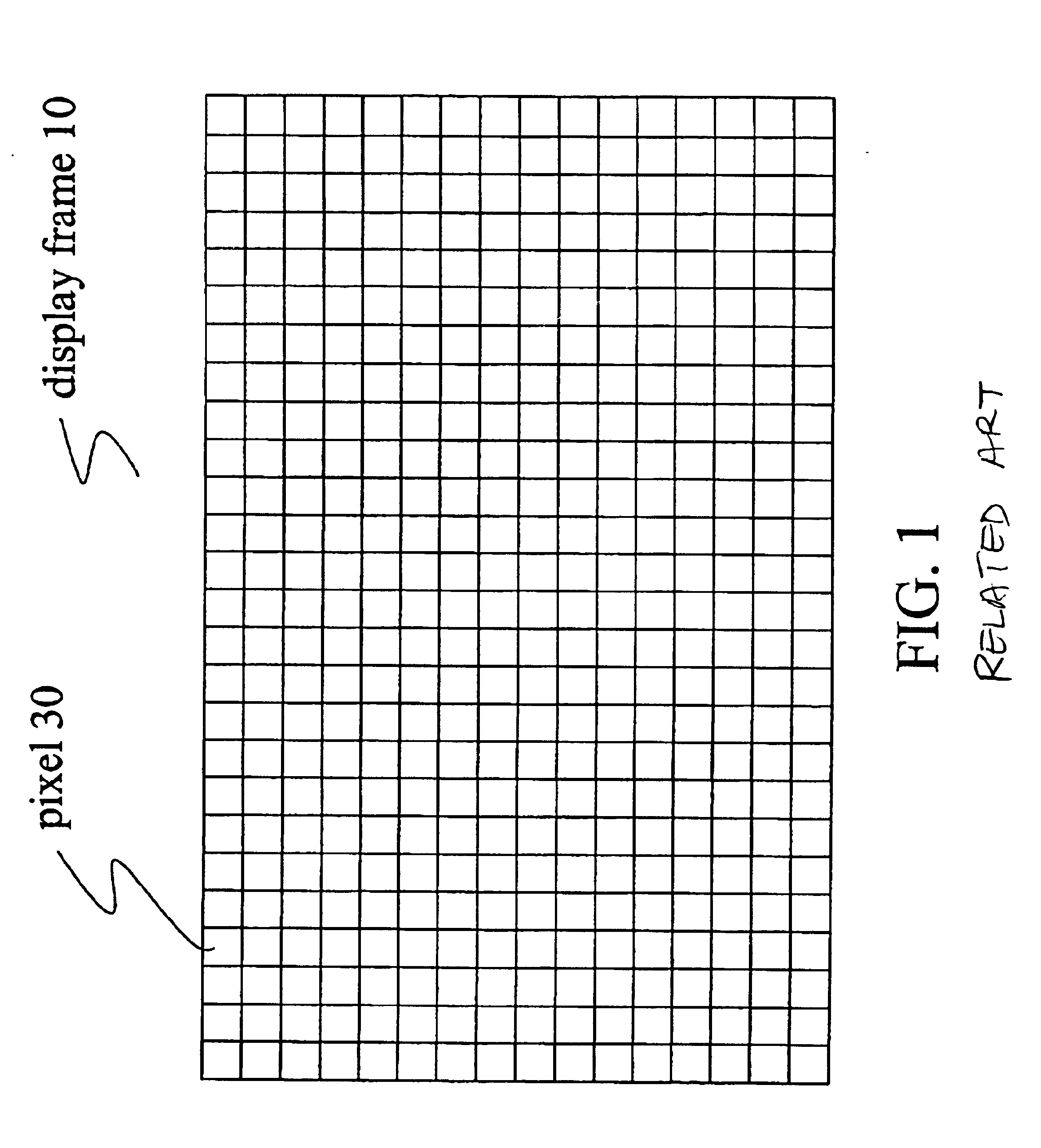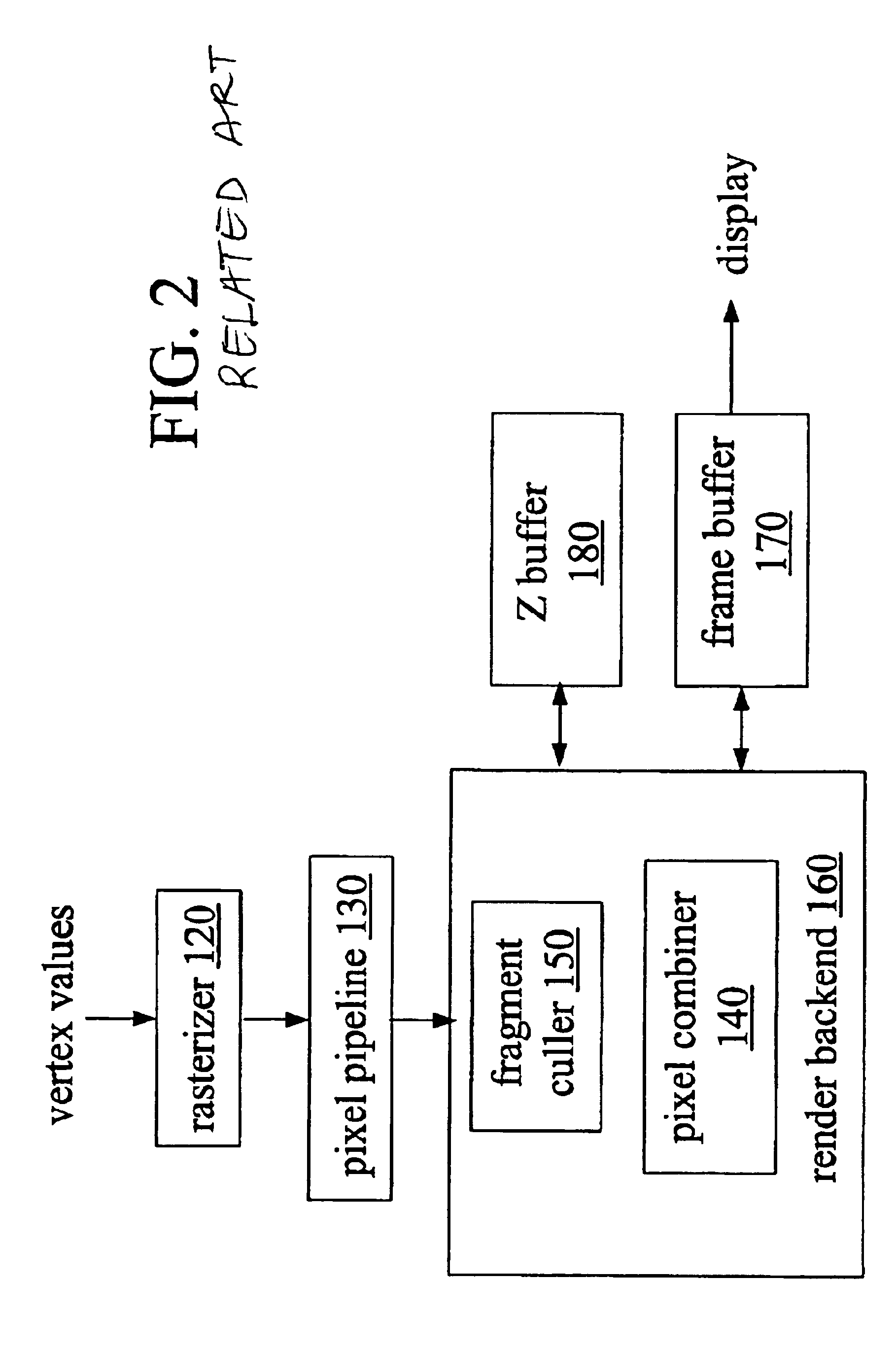System, method, and apparatus for early culling
a technology of early culling and pixel pipeline, applied in the field of video graphics processing, can solve the problems of wasting resources expended on the fragment in the pixel pipeline (e.g. in terms of processor cycles and/or memory bus usage), and operation may be costly in terms of processor cycles and/or memory bandwidth
- Summary
- Abstract
- Description
- Claims
- Application Information
AI Technical Summary
Problems solved by technology
Method used
Image
Examples
Embodiment Construction
[0026]Depth information is important to the 3D rendering process, as an object that is entirely opaque will occlude those portions of other objects that lie behind it with respect to the viewpoint. Because values of occluded fragments will not be entered into the display buffers (or will be overwritten before display), effort expended in rendering these fragments may be wasted. In some cases, processing overhead and / or memory bus usage may be considerably reduced by avoiding operations associated with rendering occluded fragments.
[0027]In a 3D graphics architecture, it may be desirable to identify fragments that will be discarded and cull them before they reach the pixel pipeline. Specifically, it may be desirable to identify and cull fragments that will be occluded. However, it may not be feasible to determine at the pipeline entrance whether a fragment ultimately will be occluded. One reason for this uncertainty is that the survival of potentially occluding fragments that are curr...
PUM
 Login to View More
Login to View More Abstract
Description
Claims
Application Information
 Login to View More
Login to View More - R&D
- Intellectual Property
- Life Sciences
- Materials
- Tech Scout
- Unparalleled Data Quality
- Higher Quality Content
- 60% Fewer Hallucinations
Browse by: Latest US Patents, China's latest patents, Technical Efficacy Thesaurus, Application Domain, Technology Topic, Popular Technical Reports.
© 2025 PatSnap. All rights reserved.Legal|Privacy policy|Modern Slavery Act Transparency Statement|Sitemap|About US| Contact US: help@patsnap.com



